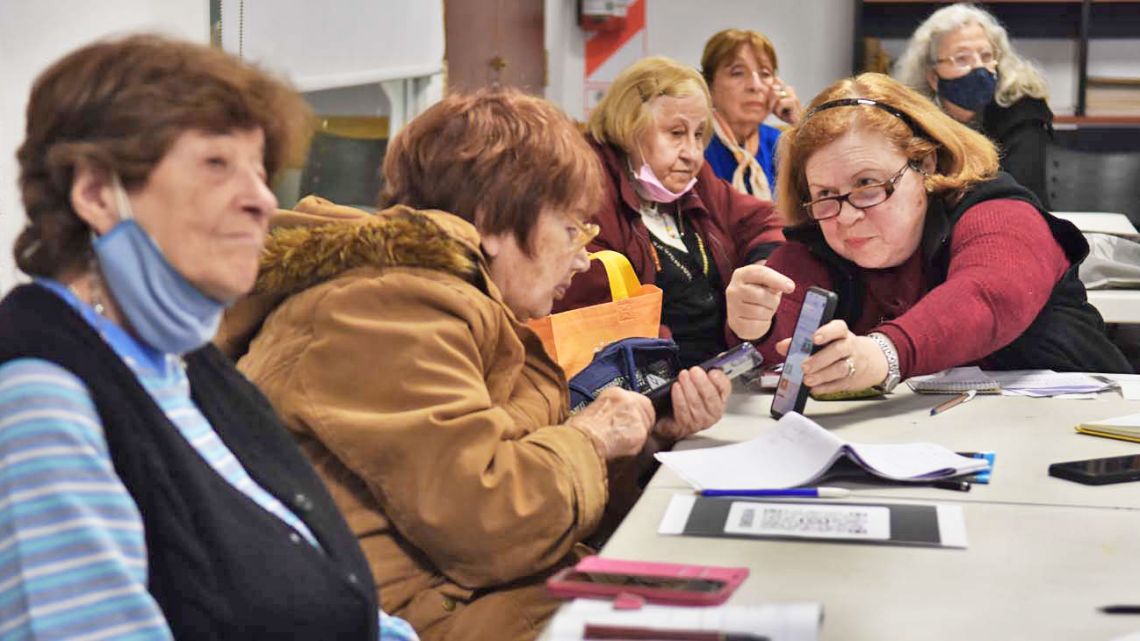blunt. This is the result of a recent survey conducted by a technology company that shows – once again – the digital generation gap. The company Avast surveyed two hundred Argentineans over the age of 55. And the work found that more than half (55%) use the internet regularly. But 21% use it only occasionally, and one in four older adults (25%) say they never use it. “Half of these respondents are retired and, logically, the proportion of people who have not used it has increased over the years: for example, 52% of those over 75 are no longer using it,” he told the paper. Rincón, Avast Regional Director. And the data collected by the Index confirms these figures. The special thing is that this “crack” is one that can be closed easily, using appropriate educational measures and policies.
“In recent years, the digital inclusion of older people has grown, especially after the isolation associated with the pandemic,” Luciana Slipakoff, a psychologist specializing in gerontology, told PROFILE. And he added: “But we have to do more to reduce this gap, because it’s a phenomenon that exists in everyday life and is very important for quality of life, whether it’s to celebrate birthdays by Zoom with emigrating relatives or send prescriptions to other countries. pharmacy or conduct medical consultations via WhatsApp”.
According to Slipakoff, who is professor at UBA in the Third Age and Old Age Chair, the problem with addressing this situation doesn’t lie in the lack of courses for adults, which do exist. The central theme is how to teach them effectively so that their learning is truly meaningful in their lives and needs.
For many older adults who grew up in the pre-digital age, approaching technology is like learning a new language. “For them this is a difficult and sometimes frustrating process that requires effort on their part and also requires patient instructors,” the expert said. And in fact many want to address this gap. For example, in an Avast survey “34% of those consulted stated that they would like to receive help from friends or relatives to carry out online activities,” says Rincón.
Talks. Meanwhile, Sebastián Fridman, psychogerontologist and coordinator of the Elderly area at the AMIA Comprehensive Center, explains that sometimes “the same adults think technology is not for them and prefer “face to face”. But in special workshops, which they share with colleagues and trained coordinators, we show them how to use them to have a better quality of life. Even understanding these issues can help them participate more and better in public conversation and family life.
“That’s what it is today”, according to Slipakoff, “in the news, on the table and in all fields, terms derived from technology are used such as ‘linking’, ‘posting’ or ‘instagraming’. If they don’t understand it, they walk away from the conversation.”
Tips. For these psychologists, we must not forget that all learning involves a frustrating and time-consuming process. And he recommends: “Those who are learning should be able to touch devices without fear, make sure they don’t get damaged, practice a lot, ask for help and have patience without getting frustrated.”
On the other hand, the facilitator should try to teach them the use and application that is more suited to each person’s interests. Maybe they are not interested in using Instagram, but they are interested in Facebook or making video calls. Others may prefer to use Youtube to listen to music. “Sometimes even in the free technology workshops offered by AMIA, we have shown how to use Home Banking or payment applications, so that the elderly can continue to be independent,” recalls Fridman.
On the other hand, often the obstacles in using technology tools are not only in learning. “They may have, for example, visual difficulties that make it difficult for them to use the small screen of their phone or listen to Wpp audio. So real integration can teach them other devices.”
Instead of how to use a smartphone, why not teach them how to take advantage of a SmartTV or plug in quality headphones? Finally Slipakoff concludes that in order to narrow this technology gap, we must think about the uniqueness of each need and find its meaning: “The key to their success is that they can leverage technology.”
“Knowing how to use it opened the world for us”
“I have been coming to this workshop for four years. During the pandemic, I keep making it via Zoom,” Flora Shorr, workshop facilitator at AMIA’s weekly meeting, told PROFILE. “Why did I do it? Technology is useful to me. But also unknown. And without workshops I have to ask my children who – sometimes – don’t have the time or are impatient”.
Shorr said that he often searches for things and words on Google. And use it to translate. What is the most useful? “Everyone. For example, today we learned about using QR and what ‘hasthag’ means. And the best thing is that it makes me feel good, because I see that my neurons and my head are still fine.” Jorge Iosovitch said similarly : “With the teachers here we can answer any question without any problem. And we learn to use social networks, from Facebook to Instagram and also Wpp. The good thing about this is it never ends, we always have new things to add and useful for everyday life. Knowing how to use it opened up the world for us.”
You may also like

“Entrepreneur. Internet fanatic. Certified zombie scholar. Friendly troublemaker. Bacon expert.”







